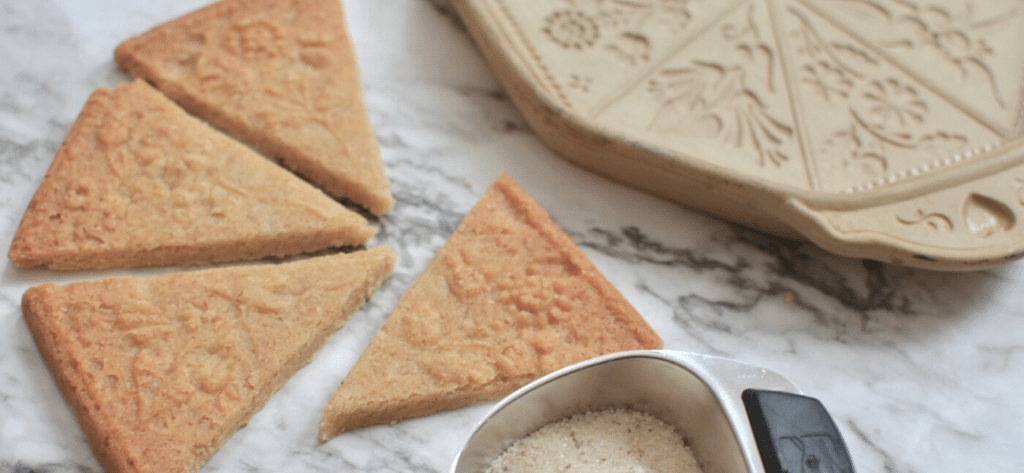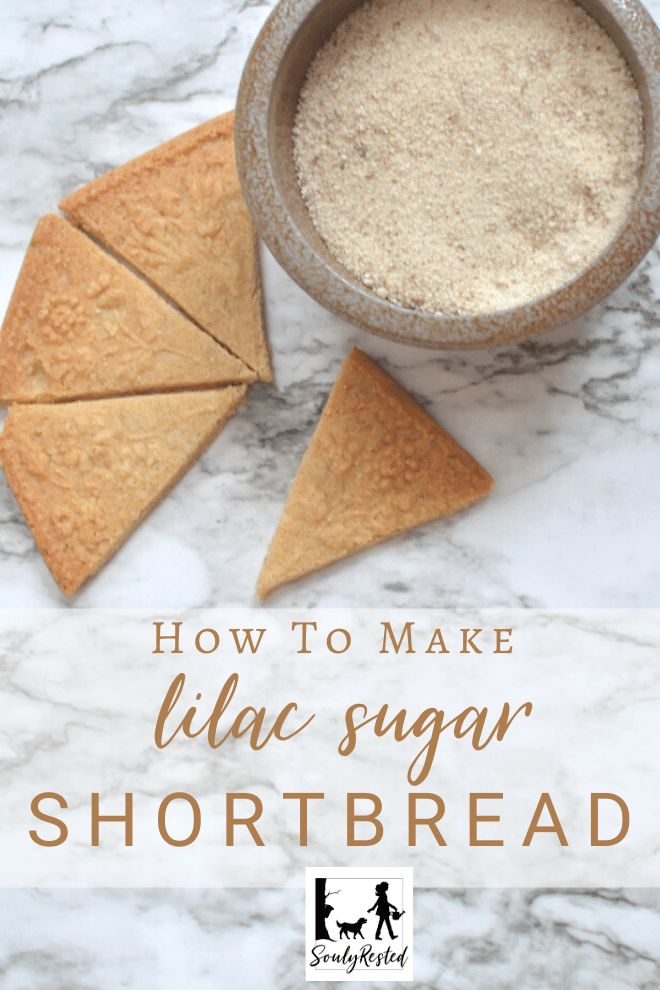Last Updated on April 29, 2024 by Michelle
I’ve always loved them but never made shortbread cookies until a few years ago. Then I started wondering what are the ingredients in shortbread cookies?
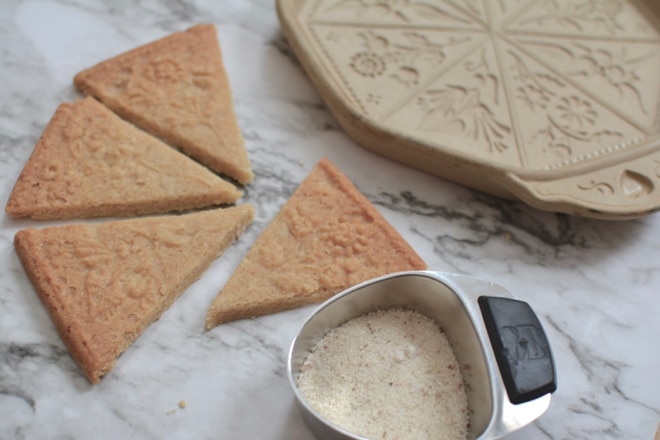
This post contains affiliate links. See my full disclosure here.
What ingredients are in shortbread cookies?
Shortbread is a traditional yumminess from Scotland that is about as simple as a melt-in-your-mouth dessert can be. It turns out traditional shortbread only has three ingredients: flour, butter, and sugar. Of course, I’m not one who sticks with “traditional” when it comes to sugar. So I started experimenting and below is one recipe I’m officially in love with.
Also, you’ll tend to find other ingredients in shortbread cookies beyond the 3 basic ones. It’s common to add a pinch of salt and some other flavor option like vanilla, lemon, maple (yeah, that one’s my favorite), and even chocolate.
While straight-up maple syrup will always be my favorite ingredient in shortbread cookies, my lilac recipe below is down-right spring-like delicious.
My Maple Shortbread recipe, along with so much more maple-infused goodness is in my book, Sweet Maple. Go here to read what folks are saying about it and to snag your bonuses when you purchase the book from anywhere (Amazon, a local bookstore, or anyplace your heart desires.)
But is it a cookie?
Most folks say yes, shortbread is a cookie. But it’s not crazy to call it a biscuit or a cake. On the other hand, it is crazy to call it by its true moniker… shortbread definitely is not “bread.”
As for why the “short” reference in its name? I kinda assumed it’s because of the short list of ingredients. But apparently I was wrong. The story is more interesting than that. While some say the name refers to all the shortening that used to be used to make it (I insist on butter instead) and others say “short” refers to the crispness or “shortness” of the final product.
The true story behind the name of shortbread? Ingenious Scottish bakers wanted to avoid paying taxes to big government who were requiring bakers to pay them a cut of all biscuits they sold. Apparently “short” bread avoided the biscuit classification.
Read this if you’d like another story of rebels, here in colonial America, who snubbed the king by installing my gorgeous wide-planked floors.
And you’ll love the story behind the history of the lilac bush.
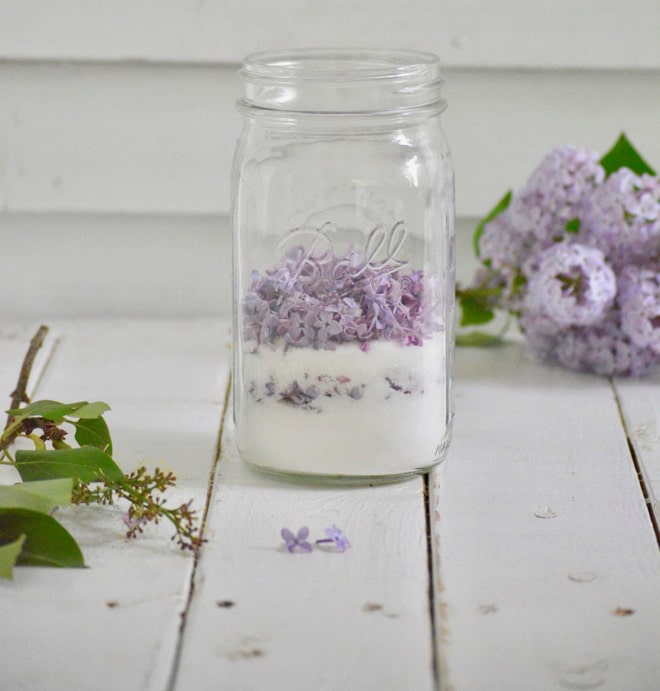
Is it weird to add lilac sugar?
Not that I ever shy away because something is “weird,” but I know some of y’all will wonder if lilac shortbread is weird. So I did a quick search on what the Scottish add to their traditional shortbread. In some parts of Scotland, folks add caraway seeds to their shortbread and call it “Bride’s Bonn.” (Yeah, I have no idea about that name.) And in Edinburgh, folks like adding citrus peel and almonds to their shortbread around the holidays. But, no I didn’t see lilac as a traditional ingredient.
Since lilacs are native to Scotland, I’m here to say that this needs to change. Lilac sugar is a perfect addition to shortbread.
Is shortbread only for tea time?
While shortbread is pretty much known as the perfect accompaniment to afternoon tea, I see no reason to ever limit such a buttery deliciousness to one time of the day or one accompanying drink. Shortbread is perfect with a tall glass of fresh, cold milk. I’m told that some love shortbread with coffee and even a glass of wine in the evening.
But my favorite drinks to accompany lilac shortbread cookies?
If I want a warm drink, I love to fix this–one of my favorite cups of tea.
If I want a tall glass of ice-cold lilac blueberry homemade soda-of-sorts this DIY kombucha is absolutely perfect with lilac shortbread.
So if you know me, you know I had to play around with adding lilac sugar and maple syrup to shortbread. After I fell in love with these pretty ceramic shortbread molds, well, yeah, I’ll take one of these with pretty much any tea or kombucha, any day.
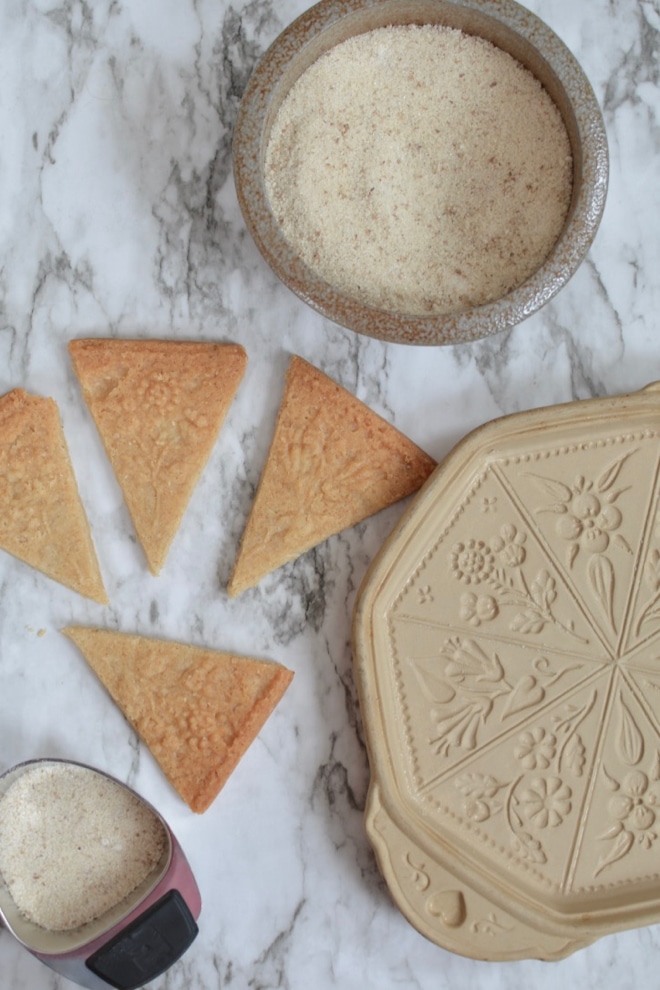
Lilac Shortbread
1 stick butter (or homemade butter–yum)
1/3 c lilac sugar (here’s how to make it)
1TB maple syrup (I highly recommend this syrup)
Pinch of salt (I love this salt)
1 cup flour
- Set out your butter, so it’s at room temperature before you begin. Also prepare your shortbread pan by spraying it lightly with cooking spray.
- Cream the butter well.
- Add lilac sugar and cream very well again.
- Cream in maple syrup, scraping your bowl to incorporate everything well.
- Add a pinch of salt to 1 cup of flour, then mix the flour into your bowl, a third of a cup at a time.
- At this point I’ve never had everything totally, smoothly incorporated. You’ll have crumbles and small balls of sugary, floury butter. Scrape every last bit out onto your counter and knead it all together into a nice smooth ball (no need to add any flour at all).
- Roll out into a flat circle roughly the size of your shortbread mold, place it on a plate, and lay the plate in your freezer for 10 minutes in your kitchen freezer or about 5 in a deep freeze. Or, if you forget about it (I’m not saying I’ve done this) you can let it sit in the mold a few minutes before you start working it in. This step (the putting the dough in the freezer part) isn’t necessary, but it will help the dough take on the imprints of your mold in a nicely defined way. So it’s just for show, folks. Take it or leave it.
- At this point, use the heel of your hand to work the dough down into your mold nicely. If you’re like me, you’ll think there is no way this is enough dough. It is. Well, unless you eat a few teaspoons of dough. (I’m not saying I’ve done this either.)
- Now this step is NOT optional. You must prick the back of your dough with a fork in many places to let the steam escape and keep your shortbread from buckling while it bakes.
- Bake at 350 for 23-25 minutes. I like to err on the short side. Look for a light gold tint. Then remove your mold from the oven and let it sit for 10-15 minutes. The longer side of this will, again, help pronounce your imprint of your mold. On the other hand, if you go too long, you’ll have crumbs you had to break out of your mold.
- Turn your shortbread out onto a wooden board, giving the mold a few taps on the board to loosen the shortbread. Cut your cookies immediately, while warm. If you try to cut them after they’ve cooled, they will crumble on you.
More lilac deliciousness:
The secret to making amazing lilac sugar.
How to make (and wonderful ways to use!) lilac syrup.
How to infuse honey with lilacs for sheer, all-natural sweetness.
How to make delicious, carbonated Lilac Blueberry Kombucha.
And here are some other links that might interest you:
The recipe for my absolute favorite cookies of all time.
The Ultimate Guide to making your own Sourdough Bread.
Products I LOVE that can turn every kitchen into a homestead-kind-of kitchen.
Jesus said to them, “I am the bread of life; he who comes to me will not hunger, and he who believes in me will never thirst.” John 6:35.
Pin this for later!
Click on the image below to pin this post.
Find out why SoulyRested was considered to be one of the Top 20 Must-Read Homesteading Blogs of 2018 and then one of the Top Homesteading Blogs of 2019 as well.
I’d love to connect!
To find me in some other neck of the woods, just click any (or every!) icon below:
And please follow along!


